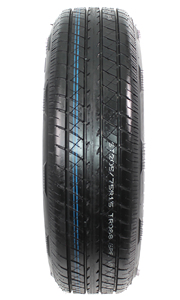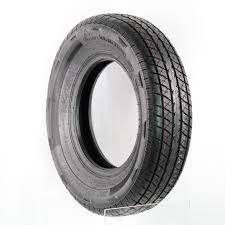(4145 products available)
























































































































































































The purple bicycle tires come in different varieties to suit the specific needs of cyclists. Here are some common types:
Purple bike tires can be utilized in various industries and applications. Here are some of them:
Retail bike shops
Purple tires for bikes can be used in retail bike shops. Shop owners can get different purple bike tires in various sizes and tread patterns to sell to customers. Some customers will prefer smoother tread patterns for cycling on pavements. Others will go for knobby tread patterns for off-road cycling. Retailers can also get different shades of purple to meet their customers' preferences.
Custom bicycle builders
These builders specialize in creating unique and personalized bicycles for customers. Custom bicycle builders can use purple bike tires to add a pop of color to the bikes they build. Custom builders can also combine purple tires with other bicycle components of different colors to meet their customers' preferences.
Bicycle rental companies
Companies offering rental services can use purple bike tires to distinguish their rental fleet. Adding purple tires to the rental fleet can make the bicycles more visually appealing and easier to identify. This will, in turn, enhance the overall customer experience.
Cycling events and promotions
Event organizers often add purple bicycle tires to bicycles used in cycling events. Organizers do this to create a striking visual impact that helps the event stand out. Additionally, organizers can use the purple tires to promote brand partnerships by adding the sponsors' logos.
Marketing and branding
Businesses can use purple tires on bikes for marketing and branding purposes. Businesses can create eye-catching advertisements that help increase brand awareness. They can also create unique and memorable bicycles that stand out from the competition.
Personal use
Individuals can use purple tires on bikes for personal use. Users can find different varieties of purple tires and install them on their bikes. Some individuals replace their existing tires with purple ones to enhance the bike's aesthetics. Others do it to reflect their personality and style.
When purchasing bicycle tires in bulk, it is essential to know how to choose the right ones before buying them. Here are some factors to consider when buying bike tires.
Durability
Durability is a primary function of bicycle tires. Tires must endure the bike's weight and the ground's friction. Therefore, tires are made with high-quality materials. These materials can be rubber or synthetic composites. Purple bicycle tires can be made from the same material as standard tires. However, the manufacturing process may differ.
Grip
Bicycle tires provide grip. Grip enables the bike to move and stop as required. The tread pattern on the tire determines how much the tire grips the ground. Less tread gives smooth surfaces more grip. More tread lets rough surfaces grip better. Purple bicycle tires have varying tread patterns. The tread pattern matches the surface the bike will ride on.
Aesthetic Appeal
Cycling tires' primary function is to give a bike its aesthetic appeal. It adds to the overall look of the bike. The color and design of the tire enhance the bike's appearance. Purple bike tires make a bike stand out in a crowd.
Puncture Resistance
Puncture-resistant tires have an extra layer of rubber. The additional layer protects sharp objects from puncturing the tire. Manufacturers make some purple bicycle tires with this feature. The layer may add to the weight of the tire. However, the added weight increases the tire's durability.
Tread Pattern
The tread pattern on a tire determines how much it grips the ground. Tires with less tread are smooth and quiet. They provide the bike more grip at high speeds. Smooth tires are excellent for city rides. Tires with more tread are rougher and noisy. They help the bike stay on the ground and drive well. Rough tires are ideal for off-road biking.
Size and Width
Wide tires are easy to ride on. They provide more stability and are great for off-road biking. Narrow tires are thin and light. Cyclists can easily maneuver with them. They are excellent for high-speed cycling.
Material Composition
Manufacturers make purple bicycle tires with high-quality rubber. Some add an extra layer of rubber for puncture resistance. The outer layer of the tire bears the tread pattern. The inner layer helps the tire grip the wheel.
Tread Pattern
The tread pattern on the tire gives it style and design. Manufacturers create different tread patterns. Some are large and bold, while others are small and refined. The tread pattern makes the tire suited for smooth or rough surfaces.
Color Variations
Manufacturers can alter the tire's outer layer to any color. The layer is added after the tread pattern is complete. Colored bicycle tires are a favorite among cyclists. They enable riders to express their personality and style.
Q1: Do all bicycles have the same tire size?
A1: No, different bicycles have different tire sizes. Tires come in various diameters and widths, which are suitable for different types of bicycles and riding styles. For instance, a mountain bike will have larger, knobbier tires than a road bike, which has smaller, smoother tires.
Q2: How can one determine the right tire size for a bicycle?
A2: One can determine the right tire size for a bike by checking the current tire's sidewall, consulting the bicycle manufacturer's specifications, or referring to the owner's manual. The measurements include diameter and width in inches or millimeters.
Q3: What is the most common tire size for a bicycle?
A3: The most common tire size varies depending on the bike type. For road bikes, 23-25mm tires are common. Mountain bikes typically use 26 to 29-inch tires. Hybrid and commuter bikes often use 28-32mm tires.
Q4: What is the common wear pattern on bicycle tires?
A4: The common wear pattern on bicycle tires is a flattened center tread. This makes the tire more susceptible to punctures and may cause discomfort when riding. The side treads will appear more prominent and less worn out than the center tread.
Q5: What can cause bicycle tires to wear out unevenly?
A5: Tires can wear out unevenly due to improper tire pressure, misaligned wheels, or worn-out suspension components. If the tire pressure is not correct, it will wear out quickly. An uneven wear can also be caused if the bicycle's wheels are not properly aligned after being hit by an object.